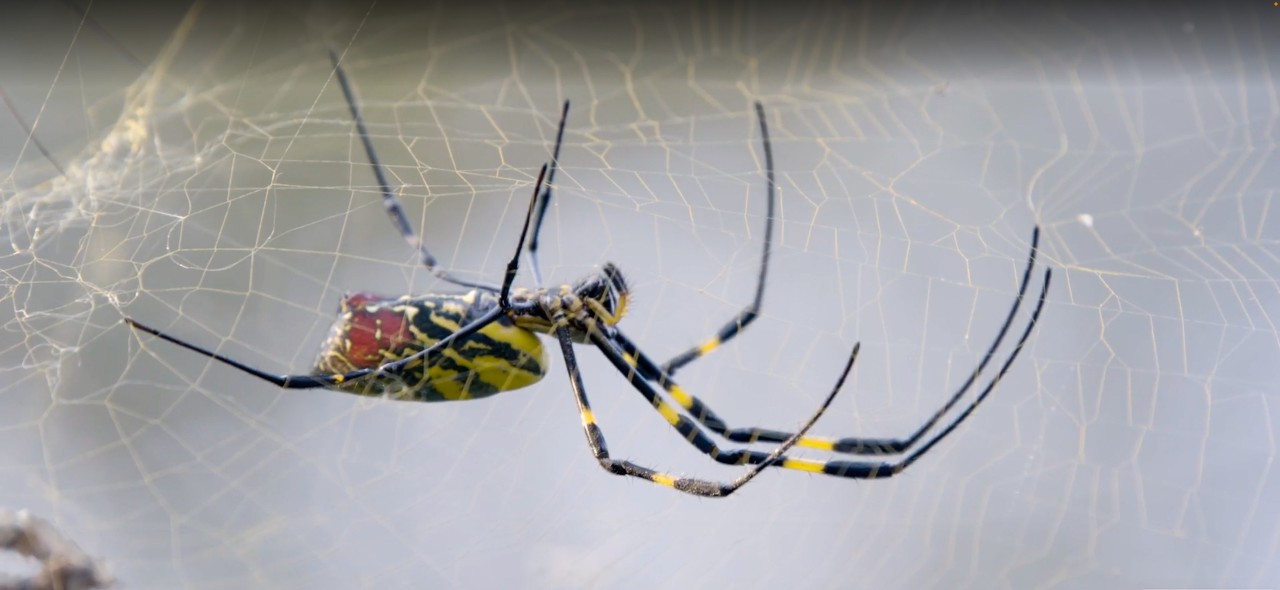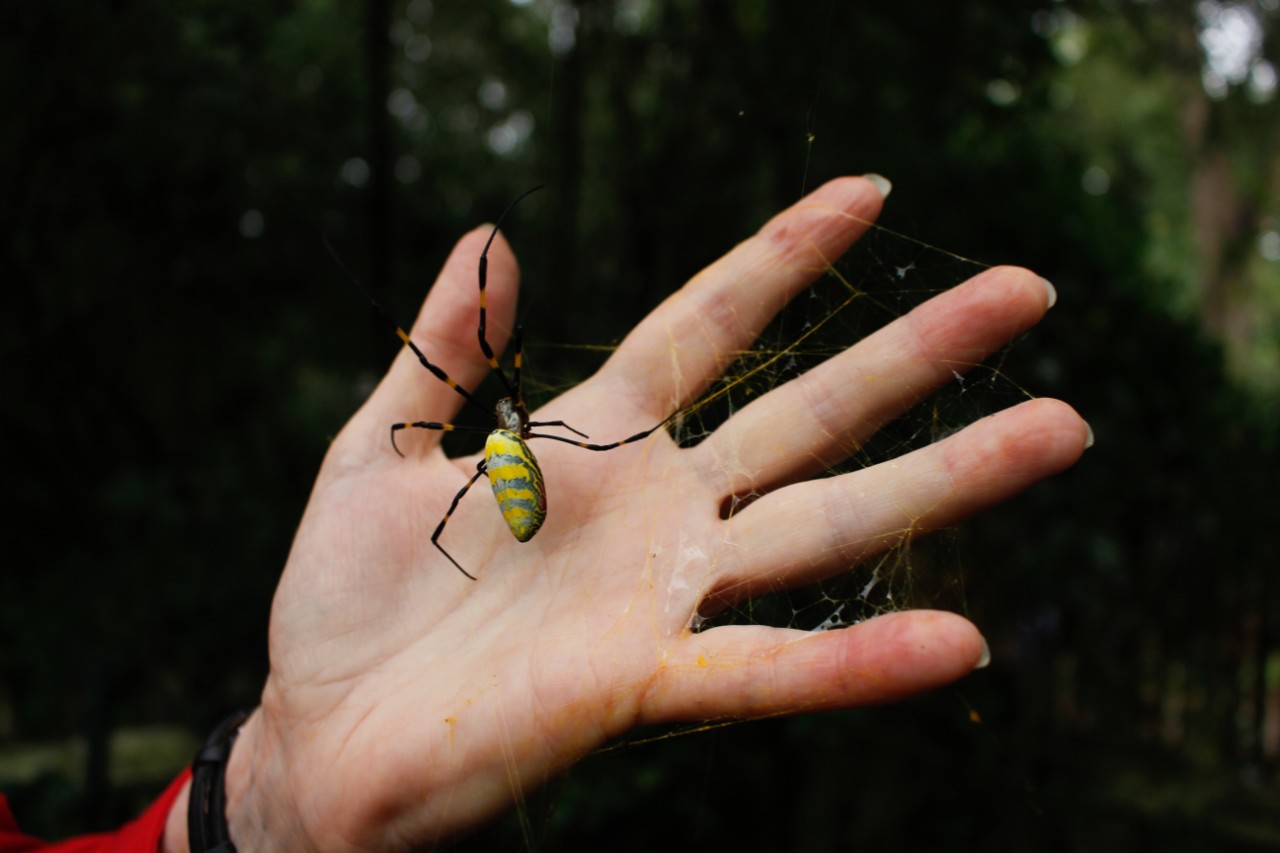
Parade: What are Joro spiders?
UC biologist talks about enormous invasive spider that has been seen in southern states
Parade magazine talked to University of Cincinnati biologist Nathan Morehouse about an enormous invasive spider that is spreading across the American Southeast.
The Joro spider grows nearly as big as your palm. Normally found in Japan, the spiders were introduced to the United States in 2013. They expand their range as baby spiders when they release little parachutes that help them sail on the wind to new territories.

Invasive Joro spiders are spreading across the American Southeast. Photo/Carly Mirabile/Courtesy the University of Georgia College of Agricultural and Environmental Sciences
Morehouse, an associate professor of biology in UC's College of Arts and Sciences, told Parade magazine that the spiders got their name from Jorōgumo, a mythical creature from Japanese folklore.
"Jorōgumo are shapeshifting spiders that can turn into beautiful women to ensnare and eat young men," Morehouse told Parade. "The name in modern kanji translates literally to 'entangling bride.'"
Morehouse has studied the vision of spiders around the world and serves as director of UC's Institute for Research in Sensing.
Scientists say Joro spiders are more tolerant of cold temperatures than other spiders, which could help them spread farther north than native orb-weaving spiders found in the South.
The good news is Joro spiders are docile and have little interest in making a home in people's homes, he said.
And their enormous webs can trap plenty of biting flies or mosquitoes if people are willing to tolerate their colorful garden guests, Morehouse said.
"My best advice is to adopt a stance of curiosity toward these newcomers, which live fascinating and surprisingly beautiful lives, all while eating lots of insects every day and night," Morehouse said.
Featured image at top: Invasive Joro spiders have been seen in some southeastern states. Photo/Anthony Barkdoll/Courtesy the University of Georgia College of Agricultural and Environmental Sciences

UC associate professor Nathan Morehouse talked to Parade magazine about enormous Joro spiders that have been found in the Southeast. Photo/Jay Yocis/UC Creative + Brand
More UC biology news

UC chemistry student Melissa Kelley works in a biology lab. Photo/Andrew Higley/UC Creative + Brand
Related Stories
Modern tech unlocks secrets of ancient art
May 7, 2025
A Classics researcher at the University of Cincinnati is using state-of-the-art technology to learn more about the mass production and placement of votives in ancient Greece.
Study explores social media’s growing influence on cosmeceutical...
May 7, 2025
The University of Cincinnati's Kelly Dobos spoke with Cosmetics Design USA about new research that revealed a significant rise in consumer interest in cosmeceuticals, or cosmetic products with active ingredients purported to have medical benefits.
First Marian Spencer Scholar graduates during UC’s Spring...
May 7, 2025
Katelyn Cotton, a political science major, became the first student in the Marian Spencer Scholarship program, to graduate from the University of Cincinnati during the May 2 Spring Commencement ceremonies.
